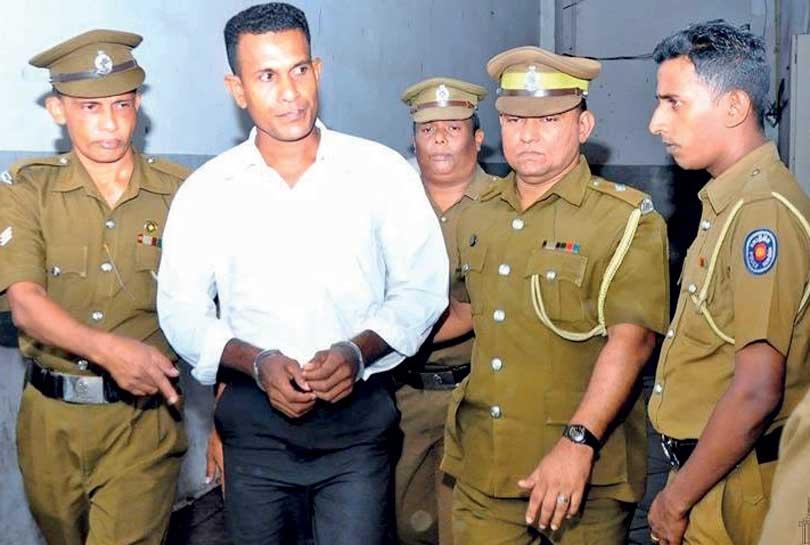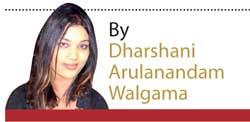Reply To:
Name - Reply Comment
The Mirusuvil Massacre, Presidential pardon and FR Applications

Ironically former Army Staff Sergeant Sunil Rathnayake had been glorified as a war hero by certain extremist sections of society
 In the beginning of the month of March 2020, the news of former Army Staff Sergeant Sunil Rathnayake, who was convicted of the heinous Mirusuvil massacre, been granted a complete presidential pardon, especially at a time when Sri Lanka was battling an unknown and a formidable enemy in the form of Covid-19, came as a rude shock to all. Rathnayake, was convicted by a High Court Trial-at-Bar of the ruthless murders of eight civilians at the height of the civil war. The Supreme Court unanimously upheld the decision of the High Court Trial-at-bar, and affirmed the sentences imposed on the convict. The decision to grant a complete presidential pardon to a convict who had committed a grave and heinous war crime, met with strong criticism from both local and international civil society Organisations and concerned citizens of the country.
In the beginning of the month of March 2020, the news of former Army Staff Sergeant Sunil Rathnayake, who was convicted of the heinous Mirusuvil massacre, been granted a complete presidential pardon, especially at a time when Sri Lanka was battling an unknown and a formidable enemy in the form of Covid-19, came as a rude shock to all. Rathnayake, was convicted by a High Court Trial-at-Bar of the ruthless murders of eight civilians at the height of the civil war. The Supreme Court unanimously upheld the decision of the High Court Trial-at-bar, and affirmed the sentences imposed on the convict. The decision to grant a complete presidential pardon to a convict who had committed a grave and heinous war crime, met with strong criticism from both local and international civil society Organisations and concerned citizens of the country.
Human rights have come into existence as a result of human struggle that has spanned across the various epochs of history, and are ideally rooted in secular political philosophy that upholds equality and liberty of all individuals.
The verdict of the High Court Trial-at-Bar with reference to the Mirissuvul massacre and the Supreme Court determination on the appeal, hold great significance as examples of justice been served for the victims who have suffered grave human rights violations by armed forces during the civil war.
In the year 2000, during the height of the civil war, a group of civilians who had gone to inspect their residences in Mirusuvil were returning to their temporary residencies in Karaveddy. When the group was proceeding towards a Guava tree at the request of a little toddler who was also accompanying the party of adults, they were stopped and interrogated by two soldiers. The interrogations soon turned into intimidation and assault, with another four soldiers later joining the group. The innocent civilians, were brutally assassinated by fatal, two inch deep fatal cuts which were inflicted on the front of the throats of each victim. The perpetrators also took necessary precaution to prevent sound from escaping to the immediate vicinity, and thereafter the bodies were buried in a mass grave. Ponnuthurai Maheswaran was the only victim to have escaped and was the sole eye witness of the incident. During preliminary investigations, at the site of the incident, Maheswaran had displayed visible fear and anguish, having identified Rathnayake and another army officer as perpetrators. Rathnayake and the other officer had also had also displayed visible uneasiness at the sight of Maheswaran. Maheswaran’s testimony was compatible with the evidences of Major de Soyza who investigated the incident, and Dr Kadiravelu who conducted the postmortems of the bodies of the victims. Convict Rathnayake had also admitted to his presence in the area in which the incident took place, and his directions had in fact led to the discovery of the mass grave containing the bodies of the eight victims. Credibility of Maheswaran’s testimony, and other compatible circumstantial evidence, established Rathnayake’s direct involvement in the crime.
In addition to Convict Rathnayake, Maheswaran had also identified four other soldiers at the identification parades. Though they had been indicted by the Attorney General, they were acquitted by the High Court Trial-at-Bar as the prosecution was unable to establish the identities of the other soldiers to the degree required by law. The fact that the other soldiers had been acquitted (2nd to the 5th accused), does not render Rathnayake innocent. Rathnayake received a fair trial in which the due process was observed and was convicted in accordance with the criminal justice system of the country.
It is evident that these brutal murders of innocent civilians including three teenagers and a little child was committed in the absence of any provocation, with the vicious intention of destroying their lives. As stated earlier the perpetrators had murdered the victims by inflicting fatal injuries. The murders were were not unintentional civilian casualties.Ironically Rathnayake had been glorified as a war hero by certain extremist sections of society, that consider him to be unlawfully prosecuted and punished by a corrupt criminal justice system. Rathnayake was portrayed as a brave soldier who fought against eight ruthless terrorists in order to protect the sovereignty of the motherland. This false and deceptive rhetoric had been hackneyed in various versions promoted on social media, with the intention of mobilising the support of the masses. It would be interesting to understand the role that social media campaigns had played in obtaining the presidential pardon for Rathnayake.
As provided by Article 34 of the Constitution of Sri Lanka, the President is vested with the power to grant a complete pardon to any offender who has been convicted by a court of law in Sri Lanka. However if the convict has been served the death sentence then as provided in the constitution , “the President shall cause a report to be made to him by the Judge who tried the case and shall forward such report to the Attorney-General with instructions that after the Attorney-General has advised thereon, the report shall be sent together with the Attorney-General’s advice to the Minister in charge of the subject of Justice, who shall forward the report with his recommendation to the President.” While the President is constitutionally bound to follow the above procedure, he/she also has an additional moral obligation and responsibility of ensuring that the presidential pardon does not obstruct justice. Presidential pardon should ideally be used as a measure of serving justice to victims when judicial error has occurred. Unfortunately perpetrators of war crimes, have often escaped prosecution, and War crimes and crimes against humanity have often been approached in a trivialising and condoning manner. In addition there have been countable cases in which undue political influence had halted the progress of criminal investigations. Certain lesser known war crimes and human rights violations had not even been subjected to preliminary investigations. When such a culture of impunity prevails, especially with respect to war crimes and human rights violations, the verdict on Mirusuvil Massacre is an exemplary instance in which the perpetrator was persecuted and held accountable in spite of a prolonged trial spanning over a decade.
The right to life, liberty and security has been enshrined in both the Universal Declaration of Human Rights,and the International Covenant on Civil and Political Rights. Despite the absence of right to life as an explicit fundamental right, the Supreme Court held in a recent milestone judgment (Rathnayake Tharanga Lakmali vs Niroshan Abeykoon,) that the custodial murder of a suspect in police custody, amounts to the violation of the right to life of the victim. The right to life is then irrefutably sacred, Universal and inalienable. The Mirusuvil murders were committed in the absence of provocation against innocent civilians consisting of two teenagers and a little child, with the vicious intention of destroying their lives. Maheswaran, then as a
twenty - year - old being the sole survivor of the brutal maasacre, fearlessly provided evidence and fought with vigor and determination for justice. Various parties including a relative of one of the victims, have filed fundamental rights applications challenging the presidential pardon granted to convict Rathnayake. This will provide an opportunity to redeliver justice to the victims which they rightfully deserve and to reverse injustice caused by executive action. It is the hope of every citizen who believes in equality and justice that Maheswaran’s valiant efforts in exposing the gory truth to the world should not prove futile.
(The writer can be reached at [email protected])